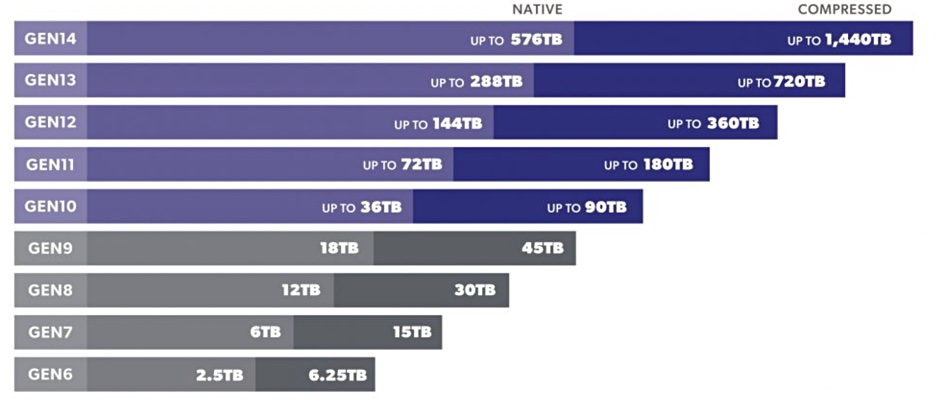The overlords behind the LTO Program have laid out the future of the tape technology, with plans to take the format to at least 1.4PB of compressed storage over the next five generations.
Update: Viewpoint and information about LTO-9 capacity reduction due to retro-compatibility need added; 11 Sep 2020.
This is two generations beyond the previous roadmap, which ended at gen 12, with 360TB of compressed capacity.
The LTO Program Technology Provider Companies – HPE, IBM, and Quantum – said the new roadmap will see the LTO Ultrium standard double capacity with each new generation.
This means LTO-14 will offer a 32x boost over the current LTO-9, which debuted in 2020 and offers 45TB of compressed capacity.

It might seem bizarre to some to be focusing on a storage medium that seems more mechanical than digital. However, the tape producers saw record breaking shipments in 2021. A large part of the appeal is the “airgapped protection” tape offers against ransomware. Which is great as long as you can live with the elongated restore time that the format – and physical airgapping – brings.
The LTO Program actually reduced the expected capacity of LTO-9 from 24TB raw to 18TB, throttling back on the previous doubling every generation cadence. That was to better balance capacity and cost for the market at the time, though the organization didn’t give any further details. However, the 2020 announcement also positioned the format as ideal for ransomware protection, just as fears about ransomware were reaching fever pitch.
A person close to LTO said the truth about the LTO-9 capacity reduction “was just to keep the retrocompatibility.” The explanation is this: “It was 100 percent due to technical issues, mainly the track control system.”
If we want to add data tracks (like lines on a vinyl disk), we need to improve the data track control system (which is in charge of keeping the head “in line”) and thus, decrease or even kill the retrocompatibility as the head will not be able to follow two different track control systems. Thus, there’s a choice; less capacity and keep backward compatibility or more capacity and lose it. For LTO-9, IBM chose to reduce the capacity and keep the retrocompatibility..
The LTO consortium is also pushing its ESG credentials over racks of quietly humming disk drives. Though you probably shouldn’t just drop them in a box. They do have to be stored within particular conditions and protected from the sort of contaminants you’d expect in any office – ink, dust, coffee, and the like.







